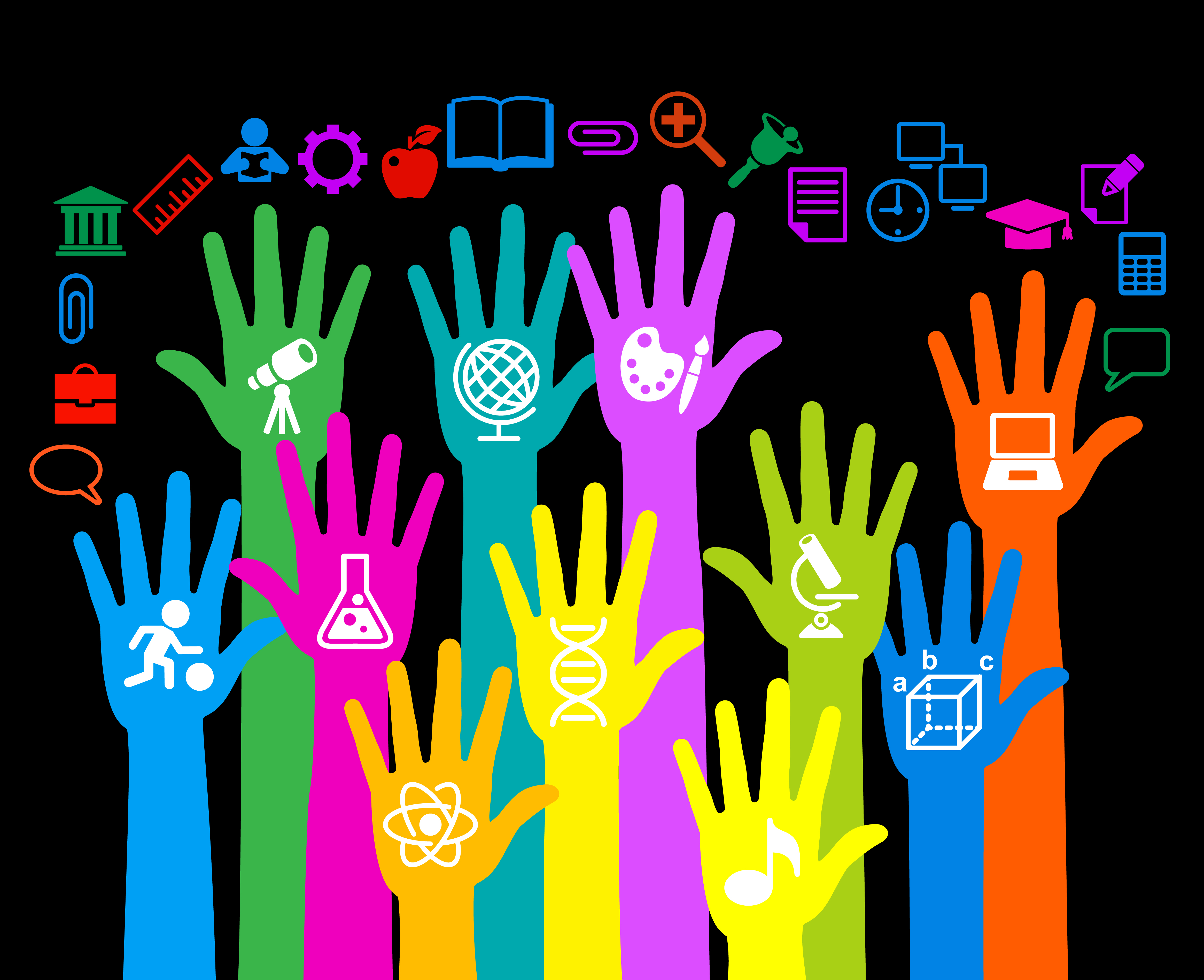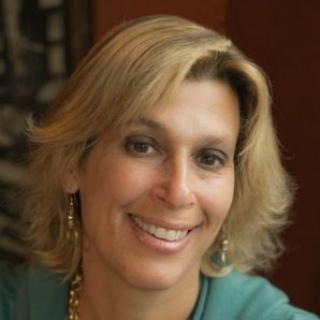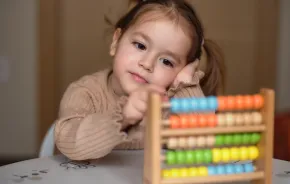 Ten years ago, when my oldest daughter started kindergarten, the educational buzz phrase du jour was “differentiated instruction.” This often played out on the colorful carpet of the kindergarten classroom, where students would work in groups from themed reading boxes.
Ten years ago, when my oldest daughter started kindergarten, the educational buzz phrase du jour was “differentiated instruction.” This often played out on the colorful carpet of the kindergarten classroom, where students would work in groups from themed reading boxes.
Differentiation, in this case, meant that the boxes contained phonics flashcards for students still learning their letter sounds, early chapter books for more advanced eager readers and a variety of reading tools in between. Although each type of box was suited for a different reading level, all adhered to a common theme, allowing a group of students at very different points on the learning curve to work together but also get what they each needed.
The following year, and for the rest of her elementary school career, my daughter was placed in “ability groups” within her classroom for reading and math. However, some parents of advanced learners, not satisfied with this classroom-based arrangement, splintered off, pulling their kids out of our public school to attend a different one that offered separate, self-contained classes solely for “gifted” students who had “tested in.”
Savvy parents whose kids didn’t pass the district’s placement test had their kids privately tested, hoping for a more successful outcome. The stakes were high: Getting into the district’s gifted program meant their kids would stay on an “advanced” track through middle school and, often, high school.
These two methods — grouping clusters of students of similar abilities within a classroom and splitting higher-achieving students off into separate classes (sometimes referred to as “tracks”) — reflect a decades-long debate in education: What’s the best way to meet the needs of a variety of learners? Does ability grouping help or hurt kids?
A recent report by the National Assessment of Educational Progress (NAEP) shows a resurgence of ability grouping in fourth grade and the persistent popularity of tracking in eighth-grade mathematics, according to Tom Loveless, author of the March 2013 report “How Well Are American Students Learning?” published by the Brown Center on Education Policy at the Brookings Institution. The trend is surprising, he says, given the fact that in the 1990s, because of concerns of racial and socioeconomic inequity, several prominent groups, including the ACLU, the NAACP and the National Governors Association, passed resolutions condemning tracking. Classroom ability grouping remained popular until the mid-1990s, when it waned in favor of whole-class instruction.
Now, in a time of education funding constraints, and with national attention focused on closing the achievement gap between white and minority students, differentiated instruction is being carefully scrutinized again, and new, technology-driven learning models are emerging.
Tailored learning or stigma?
Critics, including the National Education Association (NEA), the country’s largest teachers’ union, say that ability grouping and tracking can lead to labels that often stay with children, particularly low-income and minority students, throughout their academic careers.
Although the achievement gap between minority students and their white counterparts has narrowed, results of a 2012 NAEP study that measured student achievement at ages 9, 13 and 17 shows standardized reading and math test scores of white students range from 17 to 28 points higher than those of minority students.
“All kids have strengths and weaknesses,” says Debbie Silver, Ph.D., an educator and author of Fall Down 7 Times, Get Up 8: Teaching Kids to Succeed and Drumming to the Beat of Different Marchers: Finding the Rhythms for Differentiated Learning. “It is important for them to understand that, regardless of the circumstances they were born into, they have control over their choices and their efforts.”
Silver says ability groups can be helpful in the classroom, but flexibility is key.
As a middle school science teacher instructing 200 students per day, she didn’t have time to create individual lessons plans for each student. Instead, she developed individualized plans for small groups.
“You have to have loads of resources at your fingertips,” she stresses. “You have to be up, moving around and seeing what your students are doing.”
Groups should also be fluid, not rigid, Silver says, allowing children to move and improve as much as they need to and can. “Differentiation means the teacher needs to pay close attention to who kids are, not only who their parents and their test scores say they are.”
When it came time to place a child into a particular group, Silver says, her magic words were “for now.”
“Teaching is less about comparing kids to each other and more about comparing them to their personal best,” she says. “You always make sure the next step leads them to their personal best and continually move the bar beyond their reach.”
All families, regardless of race and socioeconomic factors, expect their children to be challenged, says Kristin Bailey-Fogarty, a Seattle-area language arts teacher who has taught advanced, general and remedial classes at the high school and middle school levels. “The difference is advocacy. Some parents are more likely to understand the system and steer their children toward advanced-track classes early on.”
Some minority parents, such as Emijah Smith, say their children have been hurt academically by lowered expectations and false assumptions about their abilities.
“My daughter attended a public elementary school in an affluent, primarily white neighborhood,” Smith says. “When she arrived there in first grade, her teacher told me she couldn’t read at grade level. The principal had her tested and found that she was reading above grade level.”
An African-American mom in Seattle, who did not want her name or the names of her children used for fear they would be labeled, said she was surprised by the rigidity of the system. When her children made the transition from a private school to a public middle school, they were denied entry into the public school’s advanced-track classes because they had not taken the placement tests. They asked for greater academic challenges, and although an attempt was made to give them more, the message they often received from their teachers was that the work they were doing was “good enough,” recalls their mom.
Short-term, long-term impacts
The use of ability grouping methods can have an impact on not just a student’s current class experience, but also on his or her entire educational trajectory. The pathway can be difficult for many parents to understand or plan for.
My daughter moved on to a middle school with tracked classes in language arts and math. Access to these classes was rationed — determined by placement tests — and there was little opportunity for students to move up to the more challenging classes if they hadn’t tested in by sixth grade.
By the time she completed eighth grade, administrators at the middle school decided to eliminate advanced language arts classes, returning to the within-class ability cluster model. But math remained separated in advanced and regular tracks, leading to different math tracks in high school, which, in turn, impacted access to certain colleges.
Grouping also raises the issue of stigma and lower self-esteem, which can strike any child, sometimes with long-lasting effects.
When she entered middle school, my daughter was placed in the advanced math track, skipping one year of math. Though she worked hard to pass the class, she missed passing the placement test to continue on the advanced track by a few points. Because her school only offered two tracks, she, and more than 50 students in the same boat, was forced to repeat the exact same curriculum the following year (as opposed to doing some needed review and then tracking ahead when ready). From then on, she referred to herself as “dumb in math.”
New learning models
“All the hand-wringing is the result of a traditional classroom structure that doesn’t allow for differentiated learning,” says Robin Lake, executive director of the University of Washington’s Center on Reinventing Public Education (CRPE).
“If you have one teacher and 26 kids, how does the teacher move all those kids forward when she has standards to meet and competing demands on her time? The only way within this structure is to pull some kids out. What excites me looking forward is how we can change the structure to support individualized learning.”
Lake is a champion of “blended learning environments,” which she says are cropping up all over the U.S. in rural and urban locales, most notably New York City, and could be the solution to the ability grouping dilemma.
Blended learning environments use a combination of in-person and online instruction, enabling students to rotate through classroom-based “learning stations” at their own pace. Khan Academy, the popular education tutorial website, is an example of a delivery model that can be used to teach specific concepts within a classroom.
“The excitement I see from teachers when they’ve implemented a blended learning model is palpable,” Lake says, adding that New York City schools that have implemented the model report a reduction in discipline problems.
Although the concept is still new, organizations such as the Gates Foundation provide grants to support it. A variety of blended learning service providers are emerging, such as Education Elements, a for-profit company that designs blended learning modules and provides a technology platform to easily bring online learning to schools.
There is also potential cost savings associated with blended learning environments.
Seton Education Partners, a nonprofit organization dedicated to revitalizing urban Catholic schools and expanding educational opportunities for low-income children, has developed the Phaedrus Initiative. Phaedrus uses technology to make Catholic schools financially viable and address the “opportunity gap” between low-income minority students and their more affluent non-minority peers.
Through the use of a variety of lesson content providers, a classroom of 30 children can have three to four smaller rotation groups. The computer programs are adaptive, providing regular feedback on student mastery of the lesson, so students can be accelerated or remediated as needed.
It’s easy to imagine this setup applied to cash-strapped public schools.
“It’s unrealistic to expect our teachers to be Superman, because he had supernatural powers,” says Jeff Kerscher, who directs the Phaedrus Initiative. “I think we should strive to make our teachers like Batman, who was a regular human with all sorts of cool tools he could use to get out of sticky situations. I want to give teachers the tools they need to meet the needs of individual students.
“Kids want to know they are getting better,” adds Kerscher. “Blended learning allows kids to see their progress and see that their efforts make a difference.”
Kerscher piloted a blended learning curriculum at St. Therese Catholic Academy in Seattle’s Madrona neighborhood, a pre-K–8 school. The school, he says, was struggling academically and culturally. After one year of a blended learning curriculum, Kerscher says, St. Therese students showed significant gains in reading and math achievement. The Phaedrus Initiative is expanding to other Catholic school sites, and the concept of blended learning is gaining interest from urban public schools, Kerscher says.
“Our middle school results have shown it is possible for students who are behind to catch up at accelerated rates. What really excites us, however, is the combination of small-group instruction and personalized learning that ensures they do not fall behind in the first place,” explains Kerscher.
“Technology has become cheap and personalized. This is the way of the future. I think blended learning will take off over the next 10 years,” says Kerscher.
“Parents should demand it.”
Alison Krupnick is ParentMap’s education editor and the author of Ruminations from the Minivan: Musings from a World Grown Large, Then Small and the blog Slice of Mid-Life.
What’s working
- According to data collected by the National Assessment of Educational Progress (NAEP), the frequency of using ability grouping in fourth-grade reading instruction rose about two and a half times, from 28 percent in 1998 to 71 percent in 2009.
- During its first year of blended learning, St. Therese Academy students school-wide outperformed the national averages for growth in reading and math.
- New York City has created the iZone, a community of innovative public schools committed to personalized learning. The network is expected to reach 400 schools by 2014.











